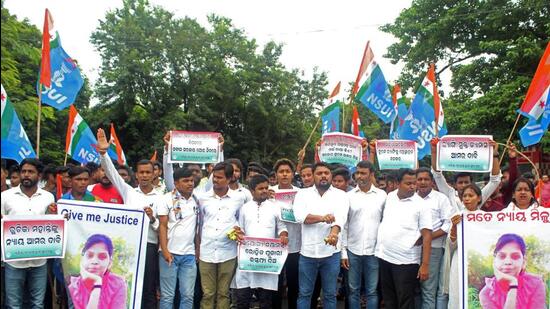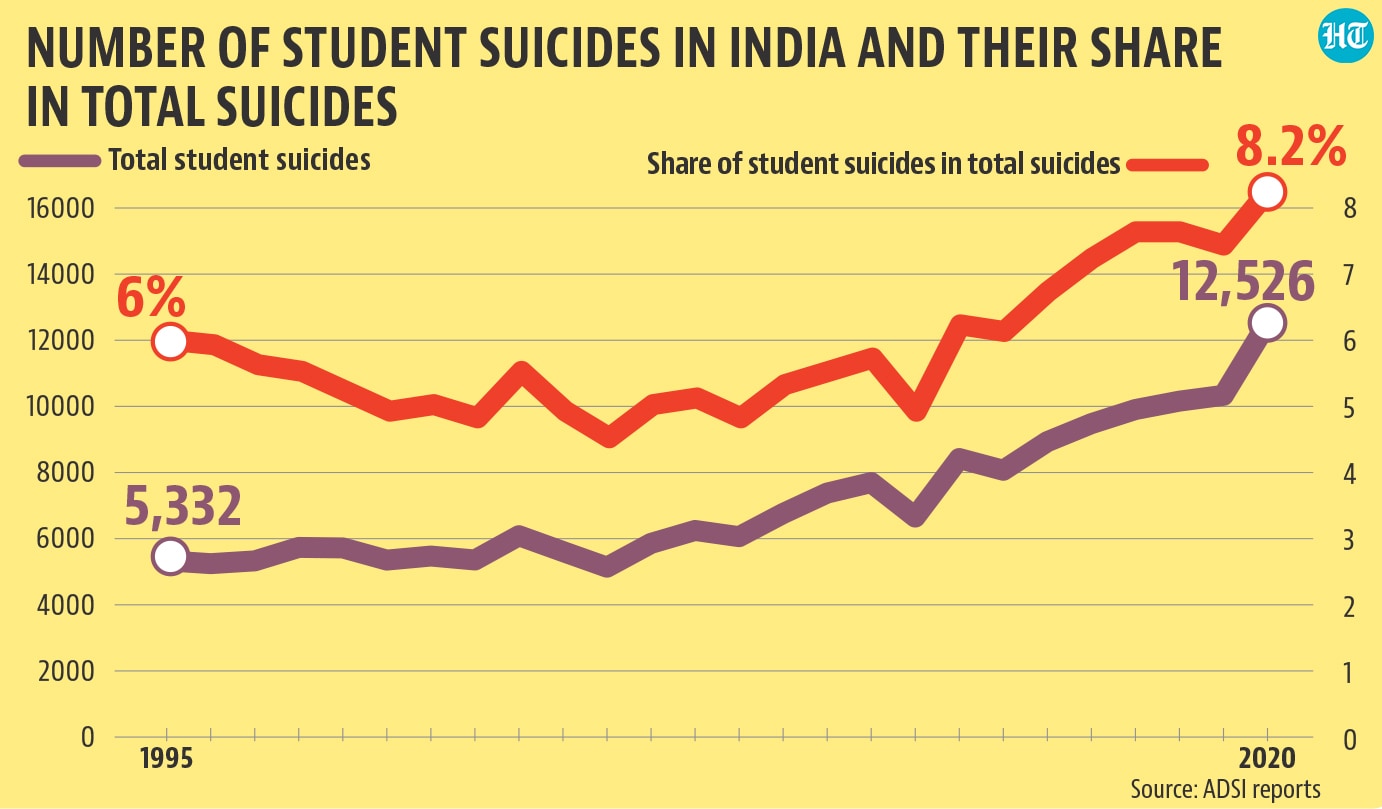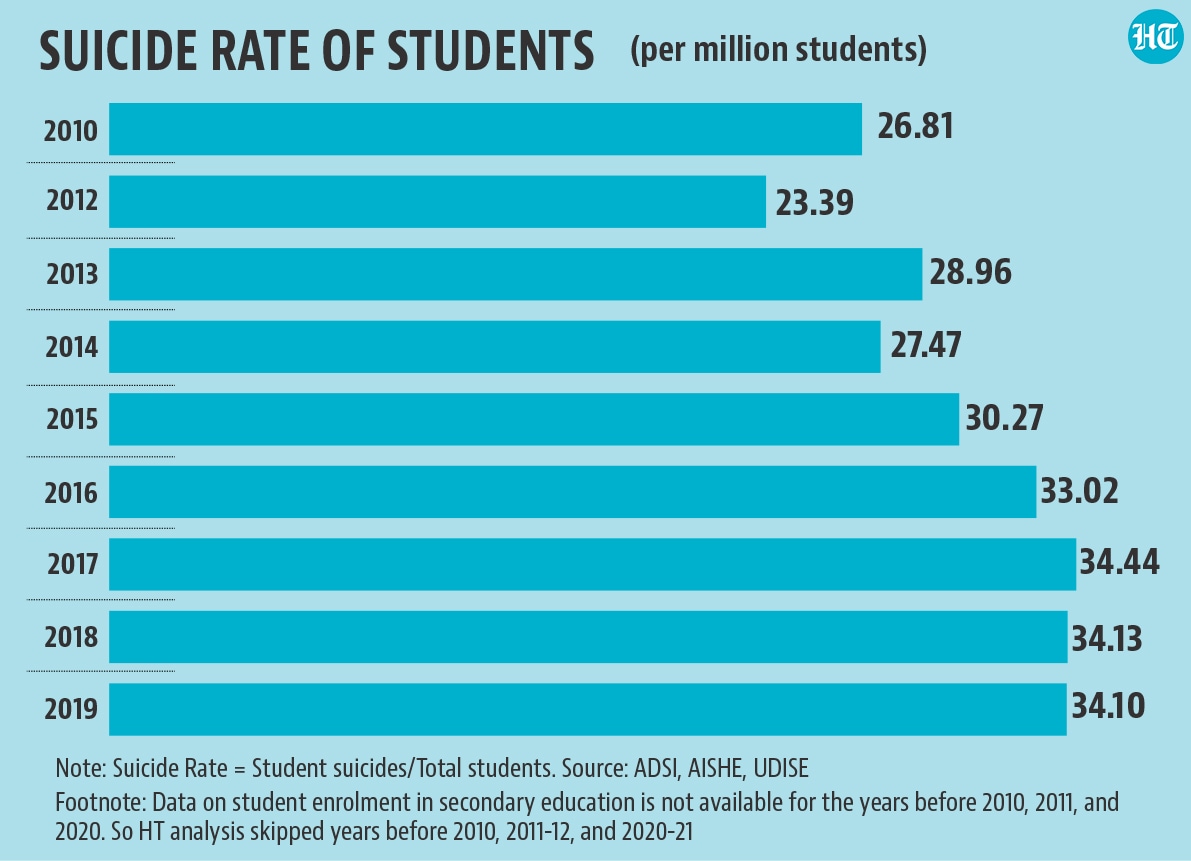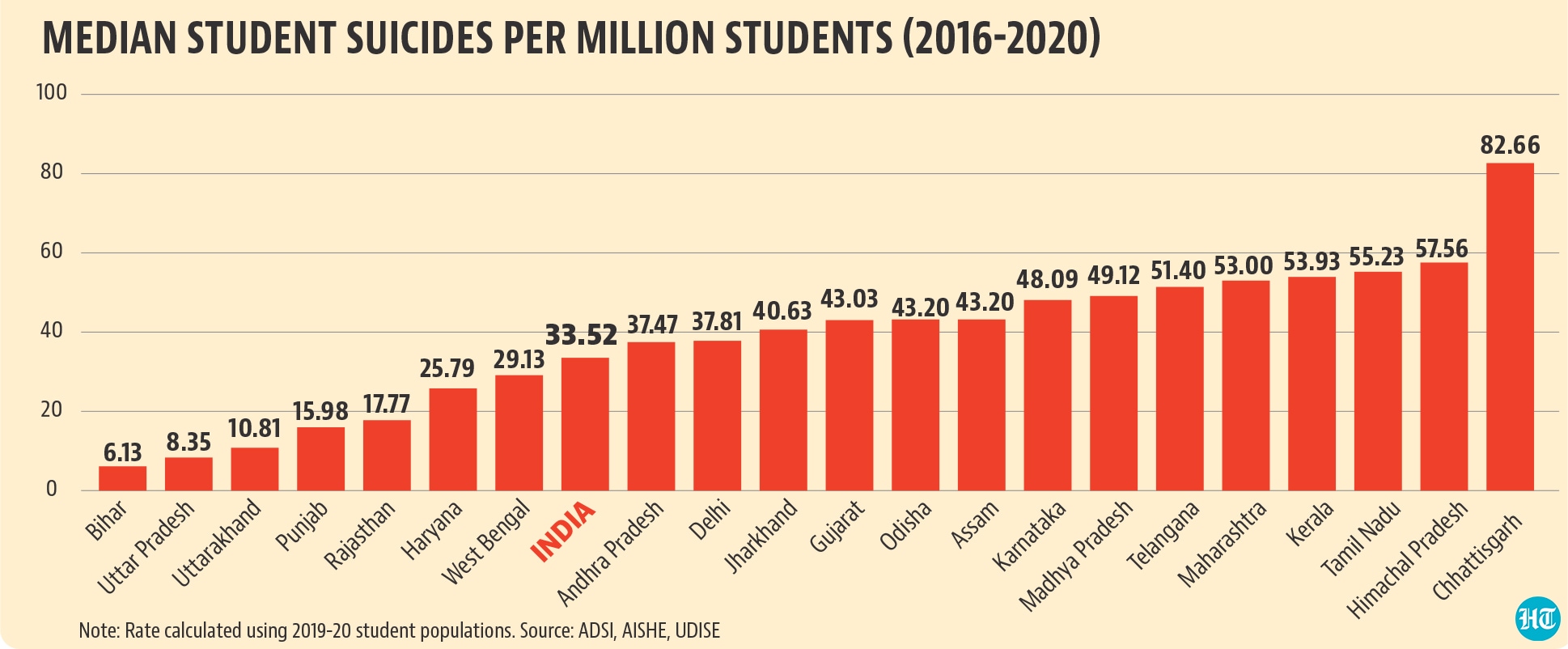What does data tell us about the problem of student suicides in India?
On July 17, there was large-scale violence in the Kallakurichi district of Tamil Nadu after a student of a private school died by suicide.
On July 17, there was large-scale violence in the Kallakurichi district of Tamil Nadu after a student of a private school died by suicide. Tamil Nadu also saw four other cases of students dying by suicide in July. How big is the crisis of student suicides in India? Has it gotten worse in the recent past? Is Tamil Nadu one of the worst states when it comes to student suicides? HT has looked at India’s official suicide statistics to answer some of these questions.

How big a problem is student suicides?
The official source of India’s suicide statistics is the Accidental Deaths and Suicides in India (ADSI) document, which is published by the National Crime Records Bureau (NCRB). NCRB works under the Union home ministry. Because the latest available ADSI report is for 2020, a more recent analysis cannot be done. Under its occupational category classification, ADSI gives separate data on student suicides. This data is available from 1995 onwards. It shows that not only has the number of student suicides risen (more on this later), their share in total suicides in the country has also increased overtime.

Has the problem of student suicides worsened?
To be sure, drawing conclusions based on absolute number of suicides over time can give a misleading picture about the severity of the problem, because of changes in the population of a particular group or overall population. This is why NCRB also gives statistics on suicide rates, which measure the number of suicides per lakh population. While NCRB does not publish suicide rates for students, HT has used data on number of students from the District Information System for Education (DISE) and the All India Survey on Higher Education (AISHE) to make this calculation. Both of these databases are collected by the ministry of education. These statistics are available from 2010 to 2019. Calculation of suicide rates based on this data shows that there has been an increase in suicide rates for students in India during this period. To be sure, suicide rates were largely flat during 2017-2019.

Are student suicides a bigger concern in some states?
Once again, suicide rate is a better measure than absolute number of suicides because student population varies across Indian states. This shows that among 21 big states, Chhattisgarh, Kerala, Tamil Nadu, Maharashtra, and Madhya Pradesh have ranked consistently high in the past five years. Chhattisgarh’s median rank from 2016 to 2020 was first. This median rank was fourth for Kerala, and fifth for both Tamil Nadu and Maharashtra. Rajasthan, Punjab, Uttarakhand, Uttar Pradesh, and Bihar were at the bottom of the table, with the smallest rates. To be sure, student enrolment numbers from 2019-20 UDISE and AISHE reports alone were used for calculating these rates, as the distribution of student population across states is unlikely to vary drastically in five years.

Why do students commit suicide?
Unfortunately, there are no official statistics to answer this question as the ADSI report does not give a break-up of student suicides by reasons. However, from years 1995 to 2020, ADSI data gives a cause-wise break-up of suicides by different age-groups.
For 2019, family problem was the biggest stated reason for suicide followed by illness, and failure in examinations for the under-30 age-group. One can assume that most students will come in this age-bracket, although it is also true that not all persons under 30 would be students. Altogether these three reasons triggered more than 45% of suicides in this age cohort. For 2020, the share of examination failures fell by 1.47%, perhaps a result of the fact that most examinations were postponed, whereas the share of family problems in driving suicides increased significantly.
Data shows that family problem was the major reason of suicide followed by illness and examination failure since 1995, and showing an increasing trend, while the share of unemployment, career problems, fall in social reputation, and ideological causes was low since 1995, and showing a relatively flat trend. What needs to be kept in mind while reading these numbers is that there was a significant increase in number of student suicides as well as their share in overall suicides between 2019 and 2020.

While there has been a lot of anecdotal reporting about students from deprived social backgrounds dying by suicide due to factors such as discrimination in educational institutions, we need more detailed official data to ascertain the extent of this problem.
Uma Gupta is an Hindustan Times How India Lives Data Journalism Fellow.








